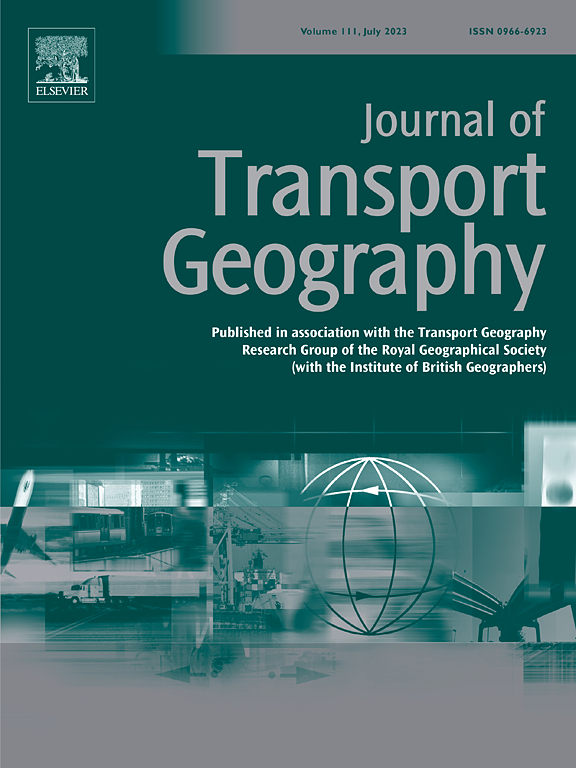The effects of bike-sharing-transit integration on accessibility equity
IF 6.3
2区 工程技术
Q1 ECONOMICS
引用次数: 0
Abstract
Contemporary urban and transportation planning prioritizes accessibility and aims to reduce inequality in access to opportunities. Current efforts in transport integration focus on enhancing intermodal services and decreasing car usage, aligning with these objectives. However, the impact of transport integration on accessibility and social challenges remains largely unexplored. The degree to which integrating public and shared transport modes (as advocated by contemporary models such as Mobility as a Service, or MaaS) helps reduce social and territorial inequalities in accessing opportunities is still unclear. We calculated accessibility levels for nine urban opportunities, considering public transportation and bike-sharing integration, and assessed inequality in these contexts. The results indicate increased territorial accessibility, particularly in peripheral areas connected to docking stations. Population-based results mirrored territorial trends, showing minimal changes and comparable reductions in inequality for access to opportunities across various activity types. However, two of the nine opportunity types exhibited increased inequality levels, underscoring the importance of transport and land-use policies for enhancing accessibility.
共享单车与公交一体化对可达性公平的影响
当代城市和交通规划优先考虑可达性,旨在减少获得机会的不平等。目前在运输一体化方面的工作重点是加强多式联运服务和减少汽车使用,与这些目标保持一致。然而,交通一体化对可达性和社会挑战的影响在很大程度上仍未得到探索。整合公共和共享交通模式(如现代模式所提倡的移动即服务,或MaaS)在多大程度上有助于减少在获得机会方面的社会和地域不平等,目前仍不清楚。我们计算了9个城市机会的可达性水平,考虑了公共交通和共享单车的整合,并评估了这些背景下的不平等。结果表明,区域可达性增加,特别是在与坞站相连的周边地区。基于人口的结果反映了地域趋势,显示出在各种活动类型中获得机会的不平等程度的变化很小,而相应的减少。然而,九种机会类型中有两种表现出更大的不平等程度,强调了运输和土地使用政策对提高可达性的重要性。
本文章由计算机程序翻译,如有差异,请以英文原文为准。
求助全文
约1分钟内获得全文
求助全文
来源期刊

Journal of Transport Geography
Multiple-
CiteScore
11.50
自引率
11.50%
发文量
197
期刊介绍:
A major resurgence has occurred in transport geography in the wake of political and policy changes, huge transport infrastructure projects and responses to urban traffic congestion. The Journal of Transport Geography provides a central focus for developments in this rapidly expanding sub-discipline.
 求助内容:
求助内容: 应助结果提醒方式:
应助结果提醒方式:


